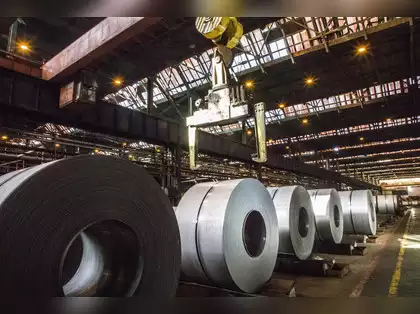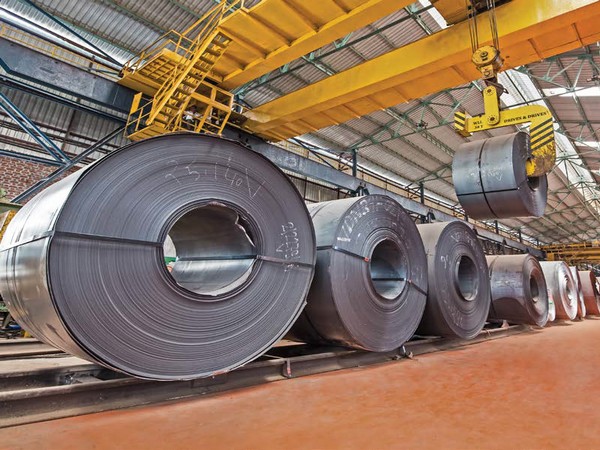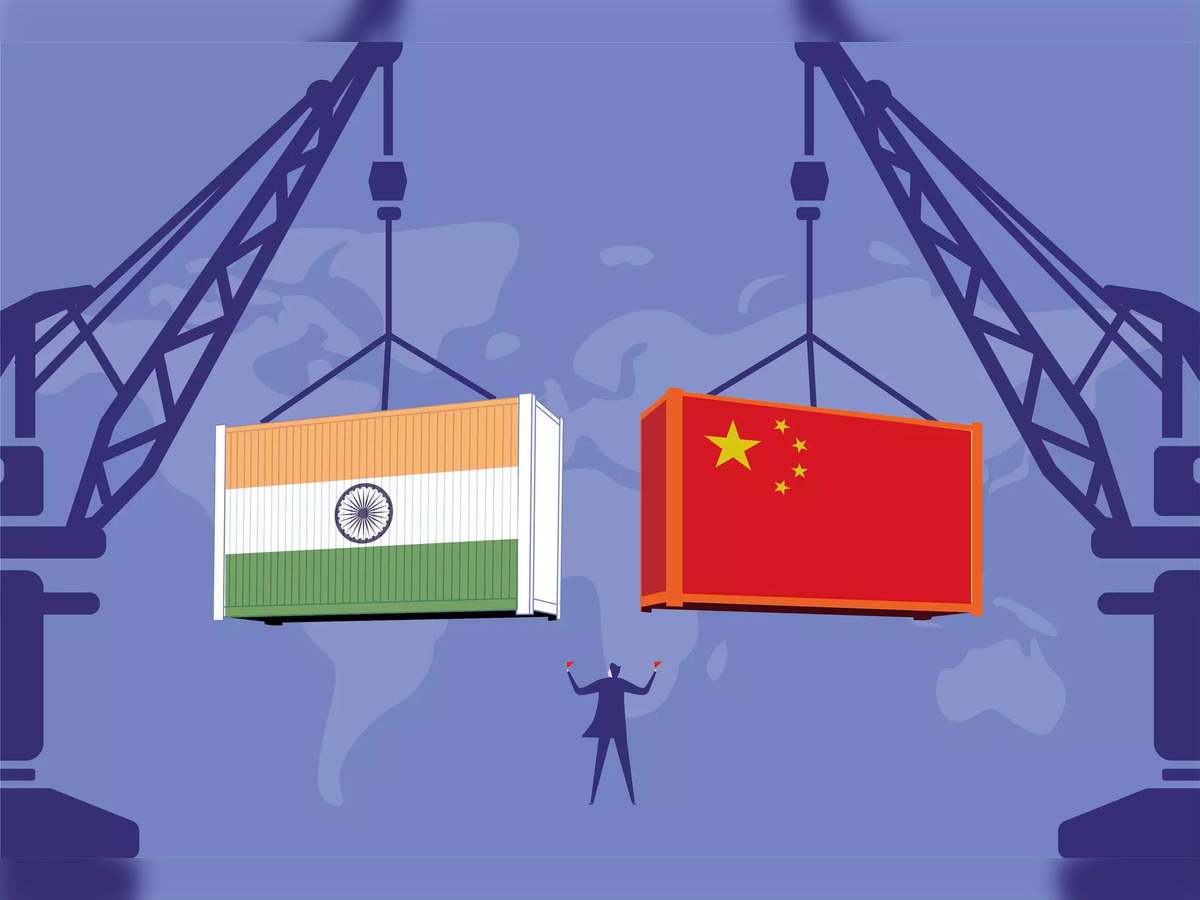China, Vietnam’s share in India’s steel import basket rises during June 2023: Official data

China, Vietnam’s share in India’s steel import basket rises during June 2023: Official data
According to official data released by the Ministry of Steel, the share of countries such as China and Vietnam in India’s steel import basket increased during June 2023 compared to the same period last year. In June 2023, India imported a total of 4.84 lakh metric tonnes (LMT) of steel, representing a 5.9 percent increase on a month-on-month (m-o-m) basis and a 7.6 percent increase compared to June 2022.
The data revealed that the share of China, Japan, Vietnam, Saudi Arabia, Russia, Nepal, and the USA witnessed an increase in India’s total steel imports in June 2023 as compared to June 2022. This indicates a shift in the sourcing patterns of steel imports for India during this period.
China and Vietnam, in particular, have seen an uptick in their share of India’s steel import basket. This suggests that these countries have become more prominent suppliers of steel to India, possibly due to competitive pricing, availability of specific steel grades, or other factors. Japan, Saudi Arabia, Russia, Nepal, and the USA also recorded an increase in their share of India’s steel imports during this period.
The rise in India’s steel imports can be attributed to various factors, including increased domestic demand for steel, fluctuations in global steel prices, and the need to meet specific requirements for infrastructure projects, manufacturing, and other sectors of the economy.
It is worth noting that steel imports play a significant role in meeting India’s steel demand, as the domestic steel industry may not always be able to fulfill the country’s requirements. Steel imports provide access to a wider range of steel products and grades that may not be readily available domestically.
The Ministry of Steel’s data highlights the evolving dynamics of India’s steel import landscape, with certain countries gaining a larger share in India’s steel imports. This underscores the importance of monitoring trade patterns, promoting domestic steel production, and maintaining a balanced approach between domestic production and imports to ensure the stability and growth of India’s steel sector.
As the steel industry continues to play a crucial role in India’s economic development, it is essential to closely monitor market trends, strengthen domestic manufacturing capabilities, and explore opportunities for collaboration and partnerships with steel-producing nations to support India’s long-term self-sufficiency and competitiveness in the steel sector.
Official data from the Ministry of Steel reveals a significant increase in the share of steel imports from China and Vietnam in India’s steel import basket between June 2022 and June 2023. In June 2022, China accounted for 26.1 percent of India’s steel imports, while Vietnam’s share was just 1 percent. However, in June 2023, the share of steel imports from China rose to 37.1 percent, marking a substantial increase. Similarly, Vietnam’s share increased to 4.8 percent during the same period.
This data suggests a notable shift in India’s steel sourcing patterns, with a higher reliance on imports from China and Vietnam. The increased share of Chinese steel imports indicates that China has become a more significant supplier to meet India’s steel demand. The rise in Vietnam’s share also signifies its growing role as a steel supplier to the Indian market.

Several factors could have contributed to the increased imports from China and Vietnam. These may include competitive pricing, the availability of specific steel grades, trade agreements, and other market dynamics. China, as one of the largest steel producers globally, has the capacity to supply steel to various countries, including India. Vietnam, on the other hand, has been expanding its steel production capabilities and has been exporting steel to cater to international demand.
It is important to monitor the evolving trends in steel imports, as they can have implications for the domestic steel industry and trade balance. While imports can provide access to a wider range of steel products and bridge any supply-demand gaps, it is essential to strike a balance between domestic production and imports to support the growth of the domestic steel sector and ensure self-sufficiency.
The government and industry stakeholders need to assess the factors driving the increased reliance on imports from specific countries and evaluate the potential impact on the domestic steel sector. This analysis can help identify areas for improvement, such as enhancing domestic steel production capacities, promoting value-added manufacturing, and ensuring a level playing field for domestic steel producers.
Additionally, it is crucial to continue promoting initiatives that enhance the competitiveness of the domestic steel industry, including research and development, technological advancements, and skill development. These efforts can help strengthen the domestic steel sector, reduce import dependency, and support India’s goal of becoming a global leader in steel production.

Overall, the increased share of steel imports from China and Vietnam in India’s import basket underscores the need for a comprehensive and balanced approach to steel trade, taking into account both domestic production capabilities and international market dynamics.The decline in India’s export of finished steel in June is noteworthy, as it reflects a decrease of 27.6 percent compared to May 2023 and 21.3 percent compared to June 2022. This decline suggests a temporary slowdown in India’s steel exports during that period.
India’s steel industry has been striving to increase its global presence and capture a significant share in the global steel markets. The country has set an ambitious target to enhance its steelmaking capacity to 300 million tonnes, which underscores its intent to become a major player in the global steel industry.
The decrease in steel exports in June could be attributed to various factors, including fluctuations in global demand and market conditions, supply chain disruptions caused by the ongoing COVID-19 pandemic, and competitive challenges faced by Indian steel exporters. Additionally, factors such as changes in global trade policies, import restrictions imposed by other countries, and currency fluctuations can also impact steel exports.
It is important for Indian steel producers to continuously assess market dynamics, identify potential export opportunities, and address any challenges that may hinder their export growth. This could involve diversifying export markets, focusing on value-added products, enhancing competitiveness through cost optimization and quality improvement, and leveraging trade agreements and partnerships.
To achieve its target of increasing steel production capacity and gain a significant share in global steel markets, India should also prioritize investments in research and development, technology upgrades, and skill development to produce high-quality steel products that meet international standards and customer requirements.
Furthermore, government support through policies that promote a favorable business environment, facilitate trade, address infrastructure bottlenecks, and encourage innovation can be crucial in boosting India’s steel exports.
While the decline in steel exports in June may be a temporary setback, it is important for the industry to remain resilient and proactive in adapting to market conditions. By focusing on enhancing competitiveness, exploring new markets, and aligning with global trends, Indian steel producers can strengthen their position in the worldwide steel industry and contribute to the country’s economic growth and development goals.

According to the data, the share of the United Kingdom (UK), Mexico, Russia, Italy, Portugal, and Nepal in India’s steel exports basket increased in June 2023. This indicates a positive trend in India’s steel exports to these countries during that period.
The growth in India’s steel exports to these markets can be attributed to various factors. Firstly, the UK has been a significant consumer of steel, and its increased share in India’s steel exports basket reflects the demand for Indian steel in the country. Similarly, Mexico, Russia, Italy, and Portugal are known for their vital manufacturing sectors, which require steel as a primary input. The growth in India’s steel exports to these countries indicates the competitiveness and quality of Indian steel products.
Nepal, being a neighbouring country, has historically been an important market for Indian steel. The increased share of Nepal in India’s steel exports basket further strengthens the bilateral trade relationship and highlights the demand for Indian steel in the Nepalese market.
It is worth noting that the prices of iron ore, a key raw material for steelmaking, remained unchanged at Rs 3,900 per tonne in June, maintaining the same level as May 2023. Stable iron ore prices can provide stability to the cost of production for steel manufacturers, allowing them to maintain competitiveness in the global market.
However, it is essential to monitor the trends in iron ore prices as they can significantly impact the steel industry’s overall cost structure. Fluctuations in iron ore prices can affect steel producers’ profitability and, in turn, impact their export competitiveness.
To sustain and further enhance India’s steel exports, it is crucial to focus on several key areas. Firstly, maintaining product quality and consistency is essential to meet the stringent requirements of international markets. Indian steel manufacturers should continue investing in technology, research, and development to produce high-quality steel that meets global standards.
Additionally, exploring new markets and diversifying export destinations will help reduce dependence on specific countries and mitigate risks associated with market fluctuations. India’s steel exporters should identify emerging markets and leverage trade agreements and partnerships to expand their customer base.
Furthermore, improving logistics and infrastructure facilities will enhance the efficiency of the supply chain and enable timely delivery of steel products to international markets. This includes investing in ports, transportation networks, and storage facilities to ensure seamless export operations.
Government support through favorable policies, such as export incentives, trade facilitation measures, and measures to address challenges related to logistics and infrastructure, is crucial for boosting India’s steel exports. The government should also engage in proactive diplomacy and market development initiatives to promote Indian steel internationally.
In conclusion, the increase in the UK, Mexico, Russia, Italy, Portugal, and Nepal share in India’s steel exports basket reflects the growing demand for Indian steel in these markets. Stable iron ore prices provide stability to the cost of production. To sustain and further enhance India’s steel exports, focusing on maintaining product quality, diversifying export markets, improving logistics, and receiving government support through favourable policies and market development initiatives is essential. By doing so, India can strengthen its position in the global steel industry and contribute to its economic growth and development goals.




